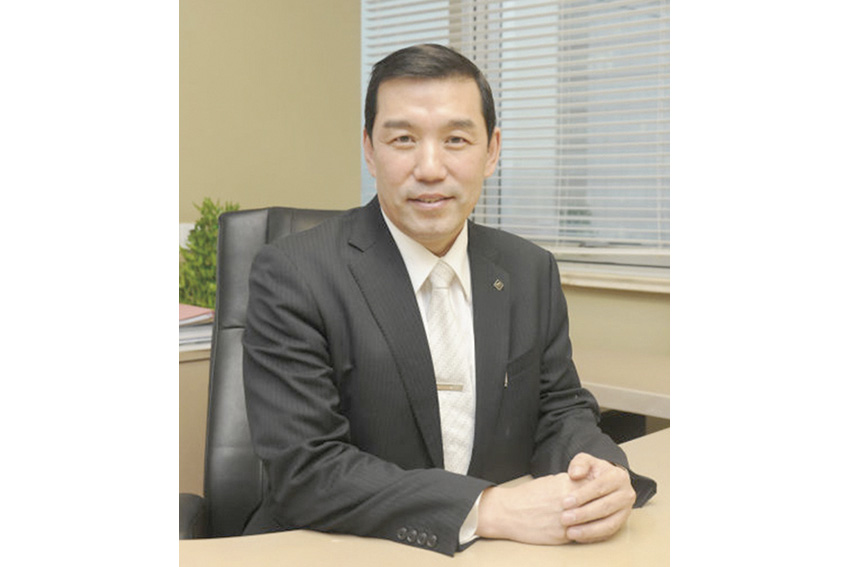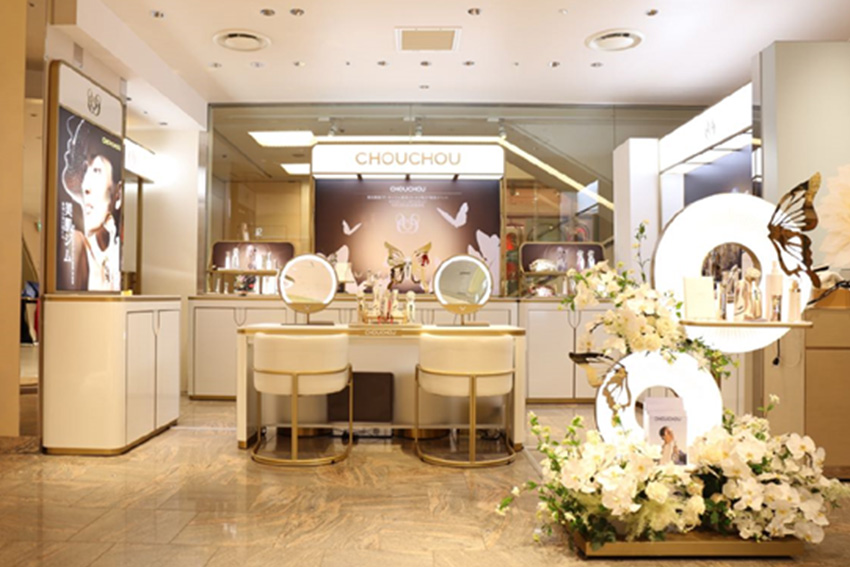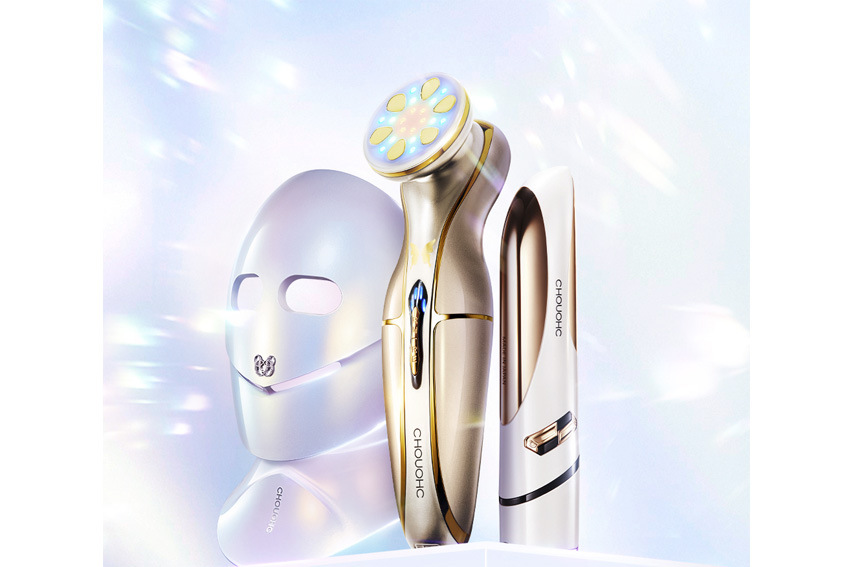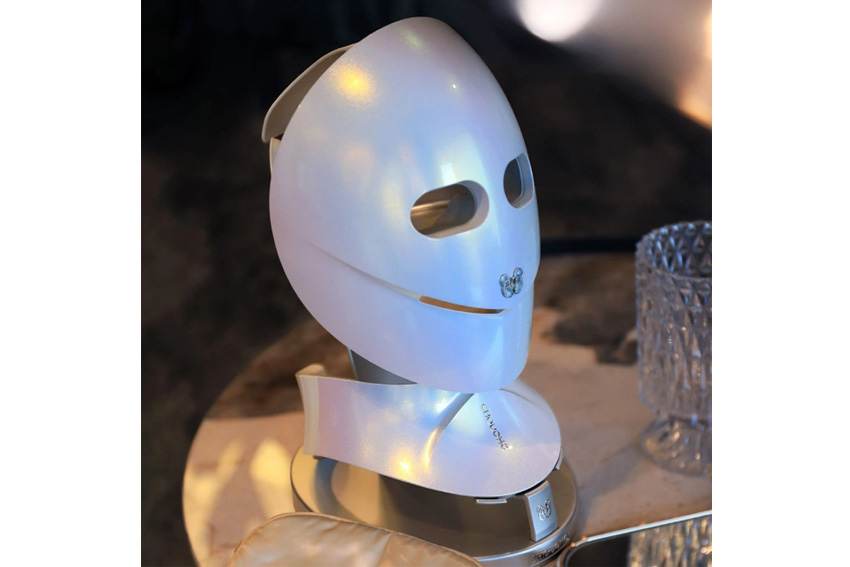Amid discussions on retail trends and economic challenges in China, the company seeks to mitigate market downturns by exploring opportunities elsewhere and diversifying its business, including venturing into the cosmetics field. Emphasizing simplicity, attachment, and innovation, the company aims for financial success and an IPO for its CHOUOHC brand, reflecting aspirations for growth and expansion in the future.

Japan has a rapidly aging population and it is said that by 2050 the population will drop below 100 million people. This is creating numerous issues including a labor shortage, a shrinking domestic market, and skill inheritance problems. To this end, it is considered important for Japanese firms to develop in China since Japanese products are highly appreciated for their high quality there. How is your firm reacting to this demographic shift and to what extent must you work overseas to ensure long-term business success?
Let’s start by analyzing all of the facts regarding the current state of the Japanese economy. One thing that is apparent across all industries is an element of stagnation. The Japanese economy simply isn’t heading in an upward direction, and quite to the contrary, it is heading downward for many industries. Numbers are dropping year to year.
Our industry is no different than all of the others, and we have seen a slow decline in retail for the past 30 years. Department stores for example are the biggest segment of retail and occupy the strongest market share, but even there there is a downward trajectory in terms of turnover. The numbers have dropped from JPY 14 trillion to JPY 6 trillion in just 30 years. To put that in numbers, that averages out to around a USD 2 billion drop per year. This is a drastic drop in numbers.
Our products are widely introduced to home centers and DIY stores nationwide. This sort of retail store is also experiencing stagnation and is not predicted to see an increase in sales anytime soon.
The answer to these woes is as you alluded to, expanding our borders and pushing beyond the shores of Japan. Luckily enough, I came to Japan 36 years ago and I was born in China. I’ve received both my Master’s degree and my Ph.D. from Japanese universities, and because of my origins, I think I have a unique ability to look outside of the box. This is why after graduating from university I started my own company, introducing products from Japan to China, and from China to Japan. This sort of approach has been the foundation of the company and we would like to act as a connecting bridge, meditating as a trader and a manufacturing company, allowing connections between Japan and China. I can create benefits from both sides, and inevitably that will lead to benefits in my own company as well.
When thinking about branching out abroad many Japanese firms find themselves stuck with an approach. You cannot just introduce conventional products to overseas markets, and quite frankly this is something that Japan will not win in. There needs to be new ideas, innovations, and diversifications, basically upscaling existing products. To satisfy the needs of customers companies need to come up with new ideas and new products.
Since the COVID-19 pandemic, we have seen big disruptions in the way consumers purchase products. E-commerce in Japan wasn’t particularly popular before 2020, but now it has grown exponentially. This is leading many experts to argue on what will be the role of physical stores in the future. Today you have many companies trying to redefine the physical shopping experience by adding personalization or in-store activities. From your point of view, how do you think stores will evolve in the future and what changes do you think will occur with the relationship between e-commerce and physical stores?
There are going to be several things we can mention per country and that is because our firm has experience in both Japan and China. Each country has its specific way of doing things and there is no such thing as a one-size-fits-all ultimate solution.
Japan right now is balancing both e-commerce and physical stores. Surprisingly most people will give a preference to physical stores. During the COVID-19 pandemic, things were not good and our sales dropped. People couldn’t go to physical stores whether they wanted to or not. However, no COVID-19 is gone so we are now rebounding back. We have now reached numbers that exceed pre-COVID numbers in retail shops here in Japan.
I think it is also connected to the lifestyles of people here in Japan. Japanese people like to visit malls on a Sunday as a family, and it is considered quality family time. This aspect of regular Japanese life goes to define the way to sell things here. E-commerce still hasn’t caught up to the level of retail stores despite the advantages of the COVID-19 pandemic.
China on the other hand is very used to e-commerce, and that may be because of the amount of sophisticated electronics device manufacturers there. People enjoy buying stuff online rather than going to shops. We believe this mindset isn’t going to change anytime soon.
The ideal balance in this regard is a mystery for us. Nobody has an ultimate answer. Obviously, for a company like ours, we will look to leverage the method that is most popular with new experiences but also balance between retail and e-commerce at the same time.
The Chinese market from a macroeconomic perspective has had turbulent times recently. China had very tough lockdown measures which meant that it was one of the last countries to open up again. The economy therefore was in a stage of lesser growth than China had accustomed the world to be in. A lot of economic experts were betting on a consumer-led recovery which still hasn’t materialized as we thought. Simultaneously China has some systemic problems such as its real estate market. What is your outlook for the performance of the Chinese market over the next six to twelve months?
I don’t draw an optimistic picture of China for the next few years to come. This year in particular is going to be a decisive one for China. One thing that is for sure is that we have around 200 companies introducing products from Japan to China and right now we see a 50% drop on a year-to-year basis. Many of those companies are either decreasing their products going to China or getting out of the Chinese market altogether. It reminds me of a similar situation in Fukushima with the contamination of the water in the ocean, creating political tension. That situation strained relations between Japan and China and is the result of image-making policies.
Within China itself, we see an increase in unemployment rates, and with this, there is going to be considerably less consumer spending. It has a big effect on people’s wallets and family budgets. This is not a good feature and not a good look for China. Of course, I would be a miss if I didn’t mention the real estate market as well, a particular dragging point for the Chinese economy.
You mentioned 200 Japanese companies acting as distributors for the Chinese market, and you also said that they have cut the necessary supplies by half year-on-year. Are you looking to offset that supply somewhere else? If your perspective of the Chinese market is a bit negative for the next 12 months are you looking for other opportunities elsewhere to compensate?
One company I’m thinking about when you asked this question is AXXIA, a cosmetics company. This is one of the 200 companies I mentioned, and it is a big player in the Chinese market. Unfortunately, however, in recent times their stocks have plummeted. These 200 companies are mostly introducing products through duty-free shops in China. This is our big business in that way so we see Japanese companies getting away from the Chinese market and it's not good for us.
The strategy we’ve developed to compensate for the downfall of the Chinese market is to go beyond China. We’ve been participating in specialized expos in Hong Kong to introduce products to Japan and Singapore. This is the easiest way to introduce Japanese products.
Our company also possesses R&D capabilities along with designing, procuring, and manufacturing capabilities. More and more emphasis has been placed on these activities within the company to come up with new solutions and products. I think in terms of our coverage we are going to be fine with the compensation of other activities.
Your company has a diverse range of activities from specialty artificial wood products to cosmetics and e-commerce. Additionally, you have activities in B2B markets and recently you have expanded to duty-free shops. Among all of these different services and activities that you have, which one would you say has the most growth potential for your business? Are you looking to diversify into new businesses or fields in the future?
Our artificial wood business is something that has been long well established now, so in that sense, it is a conventional business for us. We have been recently highlighted in a magazine as a company that is expected to grow in the years to come. The magazine is called TCR Info. You might be wondering why we are expected to grow and why we were selected by this magazine. First of all, it is because of exports. The artificial wood business we have is related to imports and that is because we have our production facility in China where we design, and produce in China, before then selling in Japan. This is sold through retail and external contractors. Unfortunately, growth isn’t going to come from this sector realistically because we simply are at full capacity here. It has its limits and we’ve almost reached those limits.
Exports on the other hand have an open range of different possibilities. As long as we grow the number of companies looking to introduce their products we can use that through our export sales channels. Export-wise, the sky's the limit.
Our business related to duty-free shops is part of our export business. Essentially the duty-free shops act as a method or channel to introduce our products to other countries. We expect this business to grow further in the years to come.

A duty-free shop operated by Asahikoushin
In 2022 you developed your CHOUOHC brand, which marks your first foray into the beauty business. Could you explain to us more about the CHOUOHC brand and the reasons why you decided to expand into the beauty and cosmetics field?
This foray is actually marking our 30th anniversary and it became a shift in strategy back in 2022. If you go into the field of cosmetics it is quite difficult to carve out a place for yourself, and there are so many products already in the market. We try to balance our concepts and this resulted in CHOUOHC. It is more of a blend of beauty and electronic devices.
The reasons behind this are quite simple. We didn’t want to pigeonhole ourselves as just a mediator. We have around 50 cosmetics companies from Japan that we introduce in our duty-free shops in China. To be frank, we aren’t profiting a lot from this. The idea was to just benefit from our experience in this sector and come up with our product.

Morpho CHOUOHC device
How does your background as a trader and manufacturer help you in developing your brand? What are some of the competitive edges you think you have gained by having the unique background that your company has?
Image is everything, and branding activities are very important. Honestly, if I said that branding activities weren’t important I would be lying to your face. We gained a certain level of recognition through our artificial wood segment, with JJ Wood and JJ Pro being our branded products. If you went to a DIY store and asked some of the specialists, chances are they would know of our products. The idea was just to leverage that image to introduce something from Japan to foreign countries like China, basically taking advantage of the recognition the made-in-Japan brand receives internationally. The solution we came to is a wonderful product that we are very proud of.
Personally, my specialty is art and design and I’m responsible for several drawings and designs for my company. I love drawing natural landscapes and last year I particularly enjoyed visiting England and drawing some of the landscapes that inspired me. Almost every year I tend to go somewhere to draw. My Master's degree and my Ph.D. is in graphic design and all of our products are designed to some extent by me.
When we interviewed the president of Nihon Kolmar he explained that due to the nature of Asian skin, major Japanese cosmetics companies have developed over 3,000 types of moisturizers. Due to a thicker dermis Asian skin ages slower, but at the same time due to a thinner stratum corneum scars are easier and are more sensitive when compared to European or American skin. Of course, depending on the ethnicity the skin would be different, but even within the same ethnicity, skin types are very different. How do you ensure that your products can suit varying types of skins? Can you introduce your main products or devices under the CHOUOHC brand?
We have a French employee in the Tokyo branch of CHOUHOC, so I can understand why you would ask this question. Trials are very important for any product we release in this regard, as is the correct certification. The way it works is that we conduct the trials in a lab and we can see how a product acts under variation conditions. We cannot capture all conditions on a global scale since there are just too many, but SGS has tested it on people of various skin types for one month and has noted the difference in skin before and after the trial. Our results are proven on paper and therefore we can include them in our marketing approach.
Interestingly, the first country in the world to introduce beauty devices was not Japan interestingly, rather it was Israel. Japan is now trying to catch up with the technology there. A lot of devices are also coming from other Asian countries too.
One of the big challenges of the beauty device market is consumer preference. Since we are talking about non-invasive types of products there are different understandings in markets. European and American markets tend to be more conservative when it comes to trying out new brands and in those markets there are very strong brands such as L’Oreal, making a new entrant's job very difficult. Even K-Beauty struggles in Western markets. What is your branding strategy when it comes to these Western markets where you are competing with legacy companies?
I think it comes down to simplicity and ease of use. Our Morpho or Radiance devices are the lightest on the market, making them easy to carry and easy to put on your head. I think realistically simplicity is the keyword.
We want an element of attachment from users, meaning that they use the product regularly. We want them to continue to use it for years to come. This is where R&D can come into play, and before we get to a final product concept we can analyze the market and see what consumers really want.

Frankly, there are so many companies in the device space, and these are coming from not only China but also Israel and Japan. We need to find a way to distinguish ourselves from the competition. This is achieved by addressing issues with different solutions that no other company is looking at. This is also why we are currently in the process of applying for patents for our technology.
This brings us to our Radiance mask technology. This came as a result of thinking about the customers. It is an LED mask facial device with a total of 6 modes. 2 modes for the morning and evening and 4 modes specific to each skin problem that consumers might have. This kind of simple but high-quality product is something that customers appreciate and it is why we have the reputation we do.
We aren’t taking a wide, mass-market approach with our CHOUOHC brand. We are more segmented and we are targeting true beauty fans. Our company is focused and concentrating on its target audience.
Imagine that we come back in nine years and have this interview all over again. What goals or dreams would you like to achieve by the time we come back for that new interview?
I would ideally like to see good financial results from CHOUOHC. Another goal is a successful initial public offering (IPO).
For more details, explore their website at https://www.aksk.jp/
0 COMMENTS